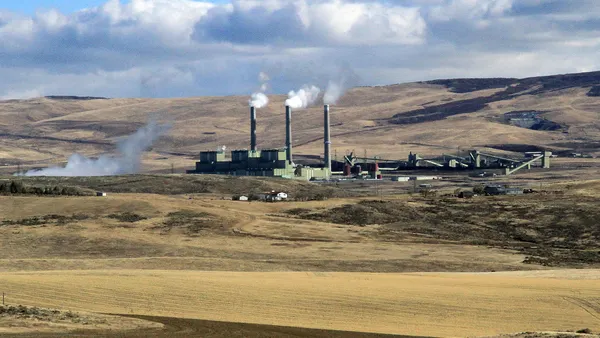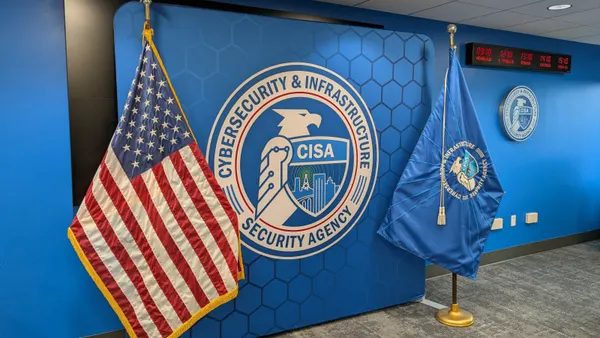Dive Brief:
-
California regulators have drafted a proposal that, if approved, would initiate an enhanced oversight and enforcement process against Pacific Gas & Electric (PG&E) due to problems with the utility's wildfire prevention work last year.
-
The process, which was adopted as a condition of PG&E's bankruptcy exit, is based on six steps triggered by certain events and could potentially lead to the commission reviewing — and possibly revoking — PG&E's operational certification down the road, although regulators have noted that it "hopefully will never reach that point."
- PG&E Corp CEO Patricia "Patti" Poppe addressed the possibility of this oversight process during the company's earnings call Thursday morning, before the proposal was released. "[F]rankly, we welcome it — I don't see that as a bad thing," she said, adding that PG&E has confidence in its wildfire mitigation plan.
Dive Insight:
The California Public Utilities Commission's (CPUC) proposal follows a letter penned by agency President Marybel Batjer last year announcing that the agency was assessing whether to launch the oversight process. An audit by the agency's wildfire safety division has found that the utility did not properly clear away dangerous vegetation from around its powerlines, instead focusing more on lower-risk lines.
If the resolution is approved, PG&E will have to submit a corrective action plan to the agency and CPUC staff will monitor its implementation and decide whether to remove the utility from the oversight process or advance it to the next step. The sixth and final step of the process would trigger a commission review, and possible revocation, of PG&E's operational certificate.
The findings in the proposal are consistent with concerns raised before by the CPUC and PG&E's court-appointed federal monitor, the utility said in a statement, adding that it has already implemented improvements to its vegetation management program and will continue to do so.
"We will promptly prepare the corrective action plan to address the issues in the draft resolution, with clear timelines and commitments," PG&E said.
Poppe, who was asked by an analyst about the oversight process before the proposal was made public, said the utility has been working closely with the commission's staff to make sure its fire mitigation plan meets expectations. She noted that PG&E's plan for 2021 includes beefed up vegetarian management plans and "impressive" technology tools.
PG&E Corp. recorded a loss of $1.3 billion — translating to $1.05 per share — in 2020, compared to $7.7 billion in the previous year, partly because of costs related to its bankruptcy reorganization proceeding that culminated last summer.
Poppe joined PG&E Corp. in January after leaving her position as head of CMS Energy. The company is continuing to build out its leadership team, especially on the engineering front, she said Thursday.
"[W]e've spent so much time responding to crises that I think there's been a loss of the ability to focus on the horizon, to get focused on the future of the clean energy transformation," Poppe said.
"I think there's a really exciting opportunity where new technologies, with the right engineering team, can mitigate multiple risks — supply shortages in the summer, wildfire mitigation as well as our clean energy transformation," she added.
Meanwhile, a group of former officers and directors of PG&E and PG&E Corp. are facing a fresh lawsuit from the trust set up as part of its bankruptcy reorganization process. The company funded the trust with $5.4 billion in cash and stock representing more than 22% of its ownership last summer to compensate victims of the wildfires caused by its infrastructure in Northern California.
"What this case attempts to expose is the people behind PG&E, the people that were making the decisions in the boardroom that we allege led directly to the fires themselves," Mark Molumphy, a partner at Cotchett, Pitre & McCarthy, explained.
The defendants include former PG&E Corp. CEO Geisha Williams, and former PG&E CEO Anthony Earley Jr., as well as former Chief Financial Officer and Senior Vice President Jason Wells.
The complaint contends that the officers did not implement a policy of proactively de-energizing powerlines in 2017, when the North Bay fires occurred, despite having failed to maintain a vegetation management program in its service territory. PG&E has since begun deploying public safety power shut-offs when weather conditions increase the risk of fire.
PG&E is aware of the lawsuit and has already contributed the vast majority of the agreed $13.5 billion to compensate individual fire victims, utility spokesperson Lynsey Paulo said in an emailed statement.
"We remain focused on reducing wildfire risk across our service area and making our electric system more resilient to the climate-driven challenges we all face in California," Paulo added.













